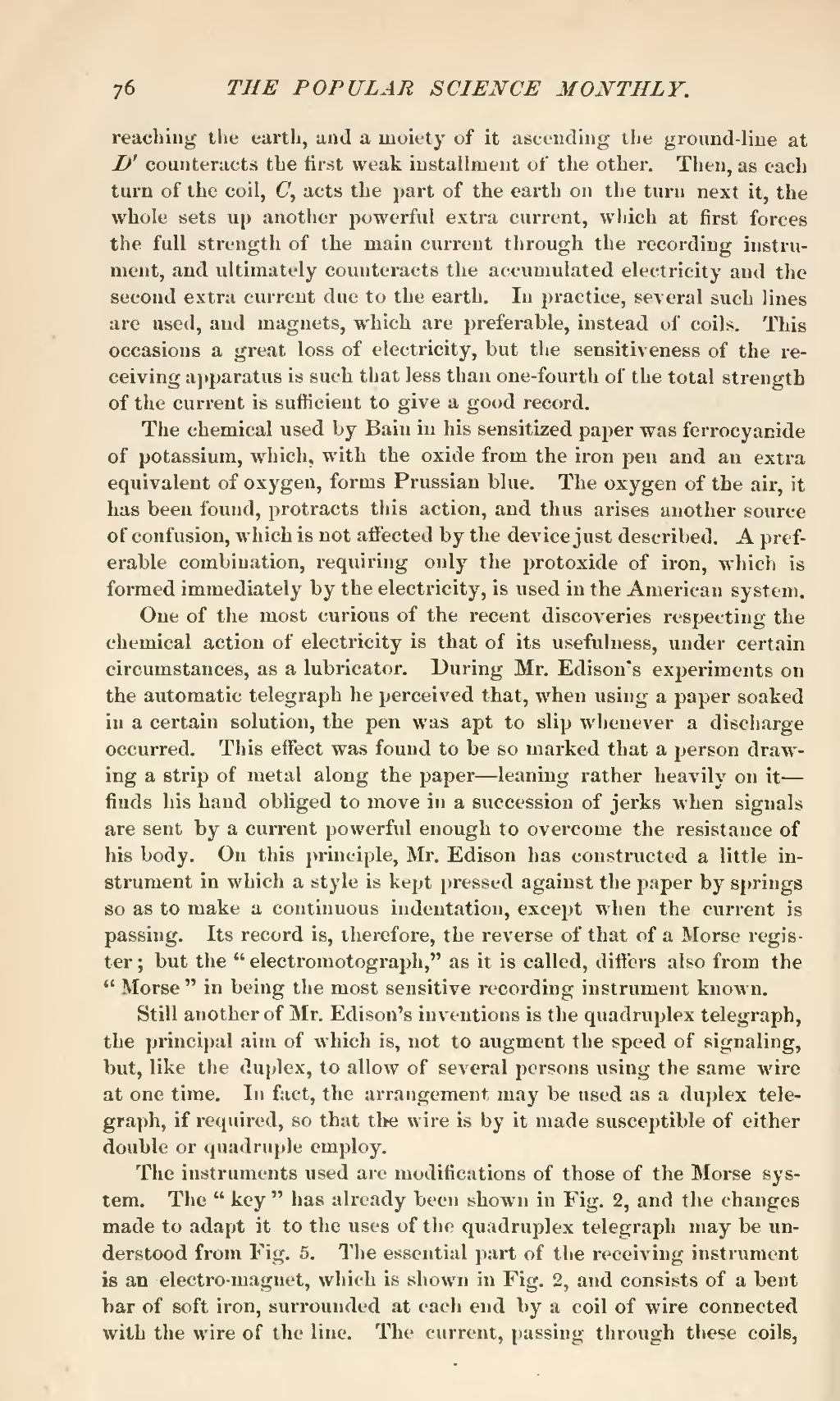reaching the earth, and a moiety of it ascending the ground-line at D' counteracts the first weak installment of the other. Then, as each turn of the coil, C, acts the part of the earth on the turn next it, the whole sets up another powerful extra current, which at first forces the full strength of the main current through the recording instrument, and ultimately counteracts the accumulated electricity and the second extra current due to the earth. In practice, several such lines are used, and magnets, which are preferable, instead of coils. This occasions a great loss of electricity, but the sensitiveness of the receiving apparatus is such that less than one-fourth of the total strength of the current is sufficient to give a good record.
The chemical used by Bain in his sensitized paper was ferrocyanide of potassium, which, with the oxide from the iron pen and an extra equivalent of oxygen, forms Prussian blue. The oxygen of the air, it has been found, protracts this action, and thus arises another source of confusion, which is not affected by the device just described. A preferable combination, requiring only the protoxide of iron, which is formed immediately by the electricity, is used in the American system.
One of the most curious of the recent discoveries respecting the chemical action of electricity is that of its usefulness, under certain circumstances, as a lubricator. During Mr. Edison's experiments on the automatic telegraph he perceived that, when using a paper soaked in a certain solution, the pen was apt to slip whenever a discharge occurred. This effect was found to be so marked that a person drawing a strip of metal along the paper—leaning rather heavily on it—finds his hand obliged to move in a succession of jerks when signals are sent by a current powerful enough to overcome the resistance of his body. On this principle, Mr. Edison has constructed a little instrument in which a style is kept pressed against the paper by springs so as to make a continuous indentation, except when the current is passing. Its record is, therefore, the reverse of that of a Morse register; but the "electromotograph," as it is called, differs also from the "Morse" in being the most sensitive recording instrument known.
Still another of Mr. Edison's inventions is the quadruplex telegraph, the principal aim of which is, not to augment the speed of signaling, but, like the duplex, to allow of several persons using the same wire at one time. In fact, the arrangement may be used as a duplex telegraph, if required, so that the wire is by it made susceptible of either double or quadruple employ.
The instruments used are modifications of those of the Morse system. The "key" has already been shown in Fig. 2, and the changes made to adapt it to the uses of the quadruplex telegraph may be understood from Fig. 5. The essential part of the receiving instrument is an electro-magnet, which is shown in Fig. 2, and consists of a bent bar of soft iron, surrounded at each end by a coil of wire connected with the wire of the line. The current, passing through these coils,
